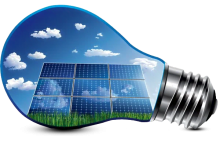Silicon has been the go-to material for solar cells for decades, but the tech is beginning to bump up against its theoretical efficiency cap of just under 30%. Perovskite has emerged in the last 15 years or so as a promising challenger, with its efficiency rapidly approaching that of silicon, while also being cheaper, lighter and more flexible.
MORE STORIES

China plans to deflect near-Earth asteroid in 2030

Massive Australia-to-Singapore clean energy cable gets green light
But as with everything, there’s a catch: perovskite is vulnerable under exposure to the elements, and tends to break down quickly. That’s of course not ideal for products designed to sit outside in direct Sun every day, so finding ways to stabilize the material is important.
Scientists from Zhejiang University in China have now developed a sturdy new type of perovskite solar cell. The new design uses a structure they call a high entropy hybrid perovskite (HEHP), which essentially combines ordered inorganic layers and disordered organic layers, which boosts its resistance to water and heat stress. In tests, the cells maintained 98% of their efficiency after 1,000 hours of light exposure, and is calculated to follow that same trajectory for more than 5,000 hours. That initial efficiency reached 25.7%, which is respectable for many solar cell types.
The team says this particular perovskite material should be applicable to a variety of different cell architectures. Along with other protective coatings and additives in the works, giving them a longer life could really take the brakes off perovskite solar cells.



